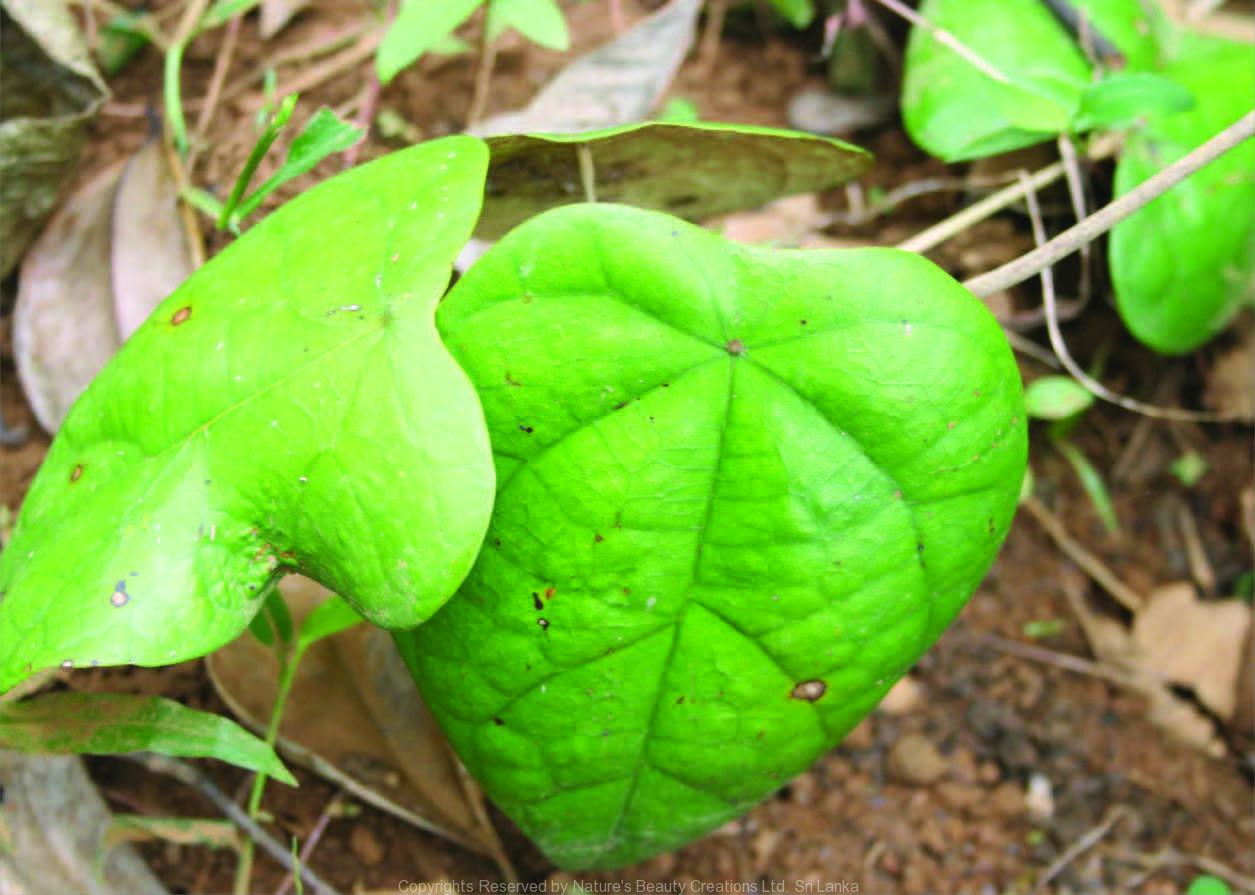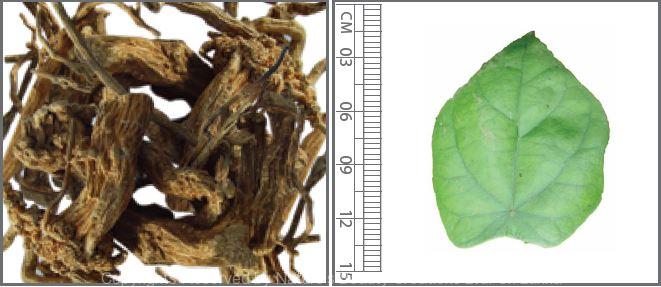

Traditional Knowledge
Useful plant parts :
Root and stem node
Uses in traditional medicine :
- Decoction of the stem nodes is taken as a bitter tonic to treat fever due to micro organisms
- Roots posses antiseptic properties and are used as a dressing for wounds and ulcers
Scientific Research
Chemical constituents:
Isoquinoline alkaloid: berberine and its derivatives, steroids and quaternary alkaloids from stem
Bioactivity :
Berberine: antibacterial; alcohol extract of stems: hypotensive, antidiabetic, antibacterial against acne causing Propionibacterium acnes and Staphylococcus epidermidis, antihepatotoxic, antioxidative, antiproliferative against cancer cells and neurotoxic
Clinical:
References : Deevanhxay, P. et al., (2009), Simultaneous characterization of quaternary alkaloids, 8-oxoprotoberberine alkaloids, and a steroid compound in Coscinium fenestratum by liquid chromatography hybrid ion trap time-of-flight mass spectrometry, Journal of Pharmaceutical and Biomedical Analysis, 50, 413-425. Goveas, S. W. et al., (2011), Isolation of endophytic fungi from Coscinium fenestratum -a red listed endangered medicinal plant, EurAsian Journal of BioSciences, 5, 48-53. Kumar, G. S. et al., (2007), Antimicrobial effects of Indian medicinal plants against acne-inducing bacteria, Tropical Journal of Pharmaceuti- cal Research, 6(2), 717-723. Nair, G. M. et al., (2005), Antibacterial effects of Coscinium fenestratum, Fitoterapia, 76, 585-587. Pinho, P. M. M. et al., (1992), Protoberberine alkaloids from Coscinlun fenestratum, Phytochemistry, 31(4), 1403-1407. Punitha, I. S. R. et al., (2005), Alcoholic Stem Extract of Coscinium fenestratum Regulates Carbohydrate Metabolism and Improves Antioxi- dant Status in Streptozotocin–Nicotinamide Induced Diabetic Rats, Evidence Based Complement Alternative Medicine, 2(3), 375-381. Rojsanga, P. et al., (2006), Determination of Berberine Content in the Stem Extracts of Coscinium fenestratum by TLC Densitometry, Medicinal Principals and Practices, 15, 373-378. Rojsanga, P. et al., (2010), In vitro anti-proliferative activity of alcoholic stem extract of Coscinium fenestratum in human colorectal cancer cells, Exp Ther Med, 1(1), 181-186. Singh, G. B. et al., (1990), Hypotensive action of a Coscinium fenestra- tum stem extract, J Ethnopharmacol, 30(2), 151-5. Shirwaikar, A. et al., (2007), Antioxidant Studies on the Methanol Stem Extract of Coscinium fenestratum, Natural Product Science, 13, 40-45. Venukumar, M. R. and Latha, M. S., (2004), Effect of Coscinium fenestratum on hepatotoxicity in rats, Indian Journal of experimental biology, 42(8), 792-7. Wattanathorn, J. et al., (2006), Neurotoxicity of Coscinium fenestratum stem, a medicinal plant used in traditional medicine, Food Chem Toxicol, 44(8), 1327-33. Wongcome, T. et al., (2007), Hypotensive effect and toxicology of the extract from Coscinium fenestratum (Gaertn.) Colebr, J Ethnopharmacol, 111(3), 468-75.
Copyrights Reserved By
Natures Beauty Creations



